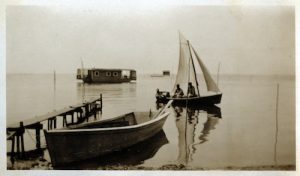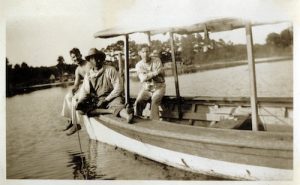“The rifle became so popular in the South that a factory for making the hunting rifle was established at Charlotte, N. C., about 1740. The founders came from Leman’s Rifle Factory at Lancaster, Pa….
” ‘General Washington’s favorite weapon was the rifle,’ says George W. Park Custer, in a… memorandum printed… for private distribution…. ‘His was presented to him in 1787 [and] was made in Charlotte, N. C. It is four feet in length of the barrel, and the entire piece is handsomely mounted with silver. The lock is beautiful work. I have known the General to kill a deer at 150 yards with this rifle.’
“This same Charlotte rifle-making firm in 1777 presented General Washington with the finest and undoubtedly the first pair of rifle pistols ever made in America. They had twelve inch barrels carrying four ounce balls and would shoot with the accuracy of a rifle at fifty or sixty feet. They saved the General’s life at Germantown [in October 1777] but that story, though a most interesting one, does not belong here.”
— From the Washington Post, June 16, 1901 (as quoted in “Hornets’ Nest” by LeGette Blythe and Charles Raven Brockmann [1961])
A colorful and intriguing account indeed, but I’ve been unable to turn up any supporting evidence on Washington’s weaponry (or on George W. Park Custer).
This caution flag is from an online bio of Henry E. Leman (1812- ), a gunsmith in Lancaster County, Pa.:
“Claims have been made on a number of occasions that gunsmiths named Leman worked in Lancaster County in the eighteenth century…. The records of the Lancaster County Court House do not support the hypothesis of Leman production before the time of Henry E. Leman.”
Thoughts, anyone?
UPDATE: Internet findings suggest “Charlotte, N.C.” was actually Charlottesville, Va. Alas.… And “George W. Park Custer” was almost certainly George W. Parke Custis, Washington’s step-grandson and adopted son.



